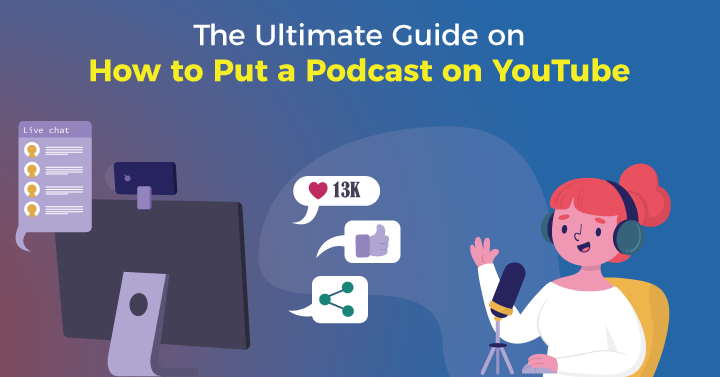
Did you know that YouTube is the second largest search engine in the world, with over 2 billion monthly active users? And did you also know that podcasts are rapidly growing in popularity, with over 100 million Americans listening to them regularly? With these two facts in mind, it’s no surprise that more and more podcasters are looking into how to put a podcast on YouTube
Whether you’re new to podcasting or an experienced podcaster, this guide will provide you with valuable insights and practical tips on how to publish your podcast on YouTube successfully. So, let’s get started!
1. Why You Need To Use The Youtube Podcast Platform
1.1. Increased Visibility
By understanding how to put a podcast on YouTube, you have the opportunity to increase your visibility and reach a larger audience. YouTube is one of the largest search engines in the world, and people often use it to search for topics they’re interested in. By using relevant keywords and optimizing your video’s title and description, you can increase your chances of appearing in search results and being discovered by new listeners.
1.2. Access to a New Audience
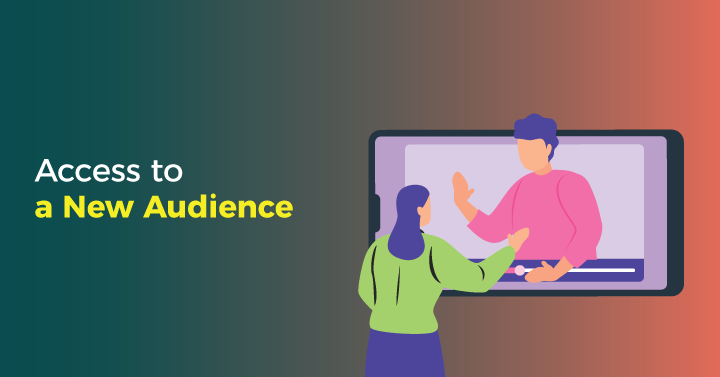
YouTube provides the perfect opportunity for podcasters to diversify and also reach out to an audience who prefers visuals to the auditory medium. Some people prefer to consume content on YouTube rather than through traditional podcasting apps.. By publishing your podcast on YouTube, you can tap into this audience and potentially gain new listeners who may not have found your show otherwise. You can also share your YouTube videos on other social media platforms to expand your reach even further.
1.3. Additional Monetization Opportunities
Learning how to put a podcast on YouTube allows podcasters to join YouTube’s ad revenue program called YouTube Partner Program. This provides podcasters with an added form of revenue in addition to traditional monetization methods like sponsorships and merchandise sales. The program allows creators to earn a share of revenue generated from ads shown on their videos. This can provide an additional source of income for podcasters and help support the production and growth of their show.
1.4. The Ability to Repurpose Content
Once you learn how to put a podcast on YouTube, you can use it to repurpose audio content into video format. This can include creating a video version of their podcast episode with relevant visuals or using software to create highlights or clips from their episodes. These clips can be shared on social media, YouTube, or the podcaster’s website, allowing them to reach a wider audience and potentially attract new listeners.
1.5. Better Engagement and Community-Building
YouTube’s commenting system and social features make it easier for podcasters to engage with their audience and build a community around their show. Listeners can leave comments, share videos, and subscribe to the podcast’s YouTube channel, creating a space for discussion and interaction between the podcaster and their audience. This can lead to greater engagement, loyalty, and ultimately, the growth of the podcast.
2. How Do I Start a Podcast on YouTube?
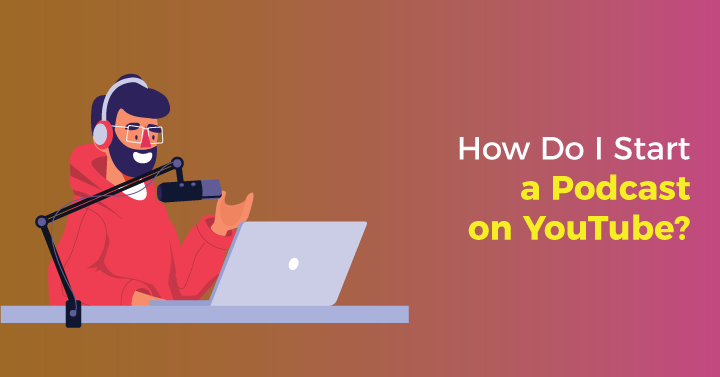
2.1. Choose Your Niche
When choosing your niche, it’s important to consider the competitive landscape on YouTube. Look for topics with some demand but aren’t overly saturated with creators. This will help your channel stand out and attract more viewers. However, do remember to identify your interests: Make a list of topics that interest you and that you are knowledgeable about. This can be anything from sports and entertainment to politics and technology.
Look for popular niches that have a large following on YouTube. You can use tools like Google Trends or TubeBuddy to see which niches are trending and have high search volumes. Do remember that once you have chosen your niche, you need to test the waters to see if there is interest from your target audience. Use it so that your niche should be something that you can consistently create content around and that your audience will find interesting.
2.2. Plan Your Content
When planning your content, it’s important to think about the visual aspect of your podcast on YouTube. Consider incorporating graphics, images, or video clips that align with your episode’s theme or topic. This will help keep your audience engaged and make your podcast more visually appealing. Planning includes developing a consistent format for your podcast, the length of each episode, the types of guests or topics you’ll cover, and the overall tone and style of your show.
Planning your podcast content is crucial for creating a successful show. To get started, you should define your niche by determining the main topic and focus of your podcast. This will help you establish your target audience and create content that resonates with them. Once you have a clear niche, set goals and objectives for your podcast. Determine what you hope to achieve with your podcast, such as building a community or establishing yourself as an expert in your field.
2.3. Get the Right Equipment
Having the right equipment is essential for producing high-quality audio that will keep your audience coming back for more. You do not have to break the bank to get the equipment; we have a guide to help you pick the right equipment.
If you are recording video for your podcast, you will also need a camera and good lighting. Look for a camera that has good video quality and is easy to use. Consider investing in a lighting kit or setting up your recording space in a well-lit area to ensure that your video looks professional. However, keep in mind that you don’t need to have the most expensive equipment to create a great podcast on YouTube. Starting with just the basics and upgrading as you go can still result in high-quality content that your audience will love.
2.4. Create a YouTube Channel
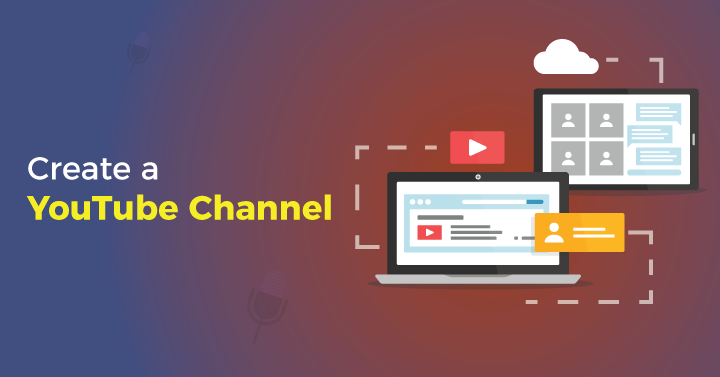
Creating a YouTube channel is an important part of how to put a podcast on YouTube. You can even use your existing Google account to do so. When setting up your channel, make sure to choose a channel name that’s easy to remember and reflects your podcast’s niche. Remember to create a channel banner and profile picture that is eye-catching and reflects your brand. Using a consistent color scheme and design elements that align with your podcast’s theme will ensure that you create an instant recall value for your podcast
2.5. Record and Edit Your Podcast
Once you have your equipment and plan in place, it’s time to start recording your podcast. Use your recording software to capture your audio, and make sure to monitor your levels to ensure that your audio is clear and easy to understand.
After recording your episode, it’s time to edit your audio and prepare it for upload. YouTube podcast editing is different from traditional podcast editing fundamentally because you also have to pay attention to the video as well, especially if you are looking to upload a video podcast.
Use editing software to clean up any background noise, adjust volume levels to ensure a comprehensive experience for the listener, and add any music or sound effects that will enhance the listening experience.
2.6. Upload Your Podcast to YouTube:
To upload your podcast to YouTube, create a video using a still image or video clip that reflects the content of your episode. Add your audio file to the video, and use editing tools to sync your audio with your visuals. Make sure to add a title, description, and relevant tags to your video so that viewers can find your podcast more easily. You may also want to consider creating a custom thumbnail that will entice viewers to click on your video.
It’s also a good idea to include timestamps in the video description so that viewers can easily navigate to specific parts of the episode.Another important factor to consider when uploading your podcast to YouTube is optimizing your video’s metadata for search. This includes using relevant keywords in the video title, description, and tags. This will help your video appear in search results when users search for related topics.
2.7. Promote your Podcast:
Just learning how to put a podcast on YouTube is not the endgame, promoting your podcast is essential for building your audience and growing your channel. Share your podcast on social media platforms like Twitter and Facebook, and encourage your viewers to subscribe to your channel. You can also collaborate with other creators in your niche to cross-promote your podcast and gain new followers. Engage with your audience by responding to comments and feedback.
Two other options that podcasters tend to overlook when promoting their podcast. The first is to optimize the video for search engines. This consists of using relevant keywords in your video title, description, and tags to help your content appear in search results.The second is to utilize paid advertising. Using paid advertising on YouTube or social media platforms helps reach a larger audience.
3. YouTube Podcast Ideas For Podcasters To Check Out
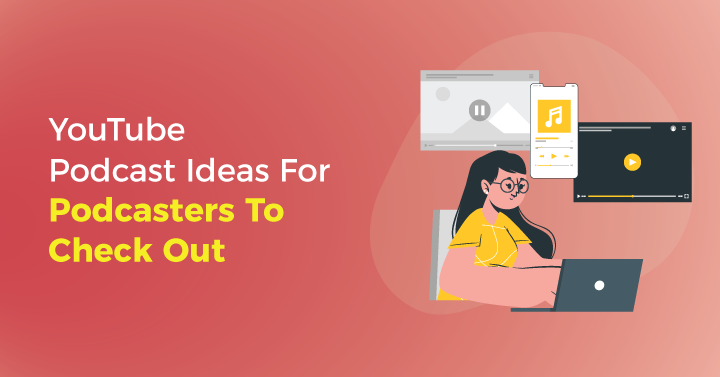
3.1. Upload Podcast on YouTube Without Video
This is a simple way to get started with podcasting on YouTube. You can record your podcast using an audio-only format and upload it to your channel. You can use a still image or create a simple visual to accompany your podcast to make it more visually appealing. This approach is great for those who want to keep their podcast simple and focus on the audio content.
3.2. Upload a Video Podcast on YouTube
You can also create a video podcast that includes both audio and visual elements. You can record your podcast as a video, and use different camera angles, graphics, or other visual elements to make it more engaging. You can also film yourself or any guests you may have on your show to add a visual component to your podcast.
3.3. Animate Your Podcast
Another option is to animate your podcast. This can be a great way to add visual interest to your podcast, especially if your podcast covers a topic that lends itself well to animation. You can use simple animation tools to create animated graphics or add animations to video footage to make your podcast more engaging and visually interesting.
4. FAQs
- How do I promote my podcast on YouTube?
You can promote your podcast on YouTube by learning how to put a podcast on YouTube. You can also use YouTube’s search and discovery features to your advantage by optimizing your video descriptions and tags, and promoting your podcast on social media and other platforms.
- Should I put my audio-only podcast on YouTube?
Yes, you can put your audio-only podcast on YouTube by creating a static image with your podcast audio as the soundtrack.
- How to upload audio podcast to YouTube for free?
To upload an audio podcast to YouTube for free, you can create a video file with a static image and your podcast audio as the soundtrack. Then, upload the video to your YouTube channel.
- How many subscribers do you need to monetize a podcast?
You don’t need subscribers to monetize a podcast on YouTube. Instead, you need to join the YouTube Partner Program and meet the eligibility requirements, which include having at least 1,000 subscribers, 4,000 watch hours in the past 12 months, and complying with YouTube’s terms and policies.
- What is YouTube podcast equipment?
YouTube podcast equipment can include a microphone, headphones, a computer or laptop, editing software, and a camera if you plan to record video podcasts. The specific equipment you need will depend on the type of podcast you want to create and your budget.
- What is the best podcast on YouTube?
There are many great podcasts on YouTube, covering a wide range of topics and genres. Some popular ones include Trash Taste, H3 Podcast, Jenna and Julian Podcast, and Ear Biscuits.



